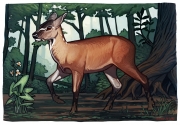All this natural heritage, unique in the peninsular area, will be accessible to the general public thanks to the VIGEOCULT project, an initiative led by the University of Barcelona, to create a natural and open museum using new virtual and augmented reality technologies on 4D geological reconstructions. This methodology will be applied to the geological evolution of the last 550 million years of the history of planet Earth recorded in the Pyrenees.
The VIGEOCULT project is led by Professor Josep Antoni Muñoz, and counts on the contributions of experts Eduard Roca, Oriol Ferrer, Òscar Gratacós, Gonzalo Rivas, Pablo Santolaria and Eloi Carola, from the UB’s Faculty of Earth Sciences, the Geodynamics and Basin Analysis Group and the UB GEOMODELS Research Institute. It is funded by NextGenerationEU / PRTR funds from the European Union, and has the participation of the Geoparc Orígens Association, the Institut Català de Paleontologia Miquel Crusafont (ICP) and the company RECURSIVA S.L.
Connecting with the richness of geological and cultural heritage
The museum idea aims to provide an emotional experience to the general public based on the understanding of geological and palaeontological systems, as well as their impact on the landscape, human activity and history. In this way, it aims to enrich the public’s experience of geological, palaeontological and cultural content.
“Understanding the Earth’s evolutionary process through the different climate cycles, and the processes of mass biological extinctions and dramatic landscape changes that have resulted, will help to foster a vision of environmental sustainability among the public. This awareness will be reinforced by the reconstruction of the possible future scenarios we face with the current climate trend”, says Josep Antoni Muñoz, from the Department of Earth and Ocean Dynamics.
“We want to strengthen the human connection with the Earth through the efficient interpretation of its geological heritage and the dissemination through different offers related to geotourism in the Pyrenees”, adds the expert.
Virtual reality and digital cinema to discover the Pyrenees’ past
VIGEOCULT will become an open museum experience in the Origins Geopark, recognised as a UNESCO Global Geopark with a richness and diversity of internationally recognised palaeontological sites and geological and cultural heritage.
“As part of the project, we will combine rigorous, state-of-the-art geological and palaeontological reconstructions with the latest technologies in virtual reality and digital cinema production to turn these simulations into spectacular images with great didactic and informative potential”, the team explains.
“Virtual scenes will be generated to create digital products in documentary format — virtual reality or augmented reality — based on the reconstruction of geological, palaeontological or historical sites at different scales. The animation production will include the use of high-tech f/x visual software to generate visually powerful images and photorealistic animations”.
The process, technology and results will be at the level of high-end digital cinematography, and will allow for application on mobile devices such as smartphones, tablets and virtual reality glasses.
In line with the sustainable development goals of the United Nations 2030 Agenda, VIGEOCULT will create products that will give the public a better personal and emotional connection with the planet to understand the values of nature and territory, the geological history of the Earth and the knowledge of the history of our ancestors.
“Finally, our project also identifies with the territory’s need to identify, organise and use the values of the existing geological heritage as an engine for sustainable rural development, and will contribute to fostering scientific vocations in future generations and new highly qualified job opportunities linked to the territory”, the team concludes.
Main image: Artwork of a group of titanosaurs moving through the Cretaceous paleoenvironment of the present-day Pyrenees. (Credit: VIGEOCULT)
Project information:
VIGEOCULT Project (PLEC2021-00793) is funded by MICIU/AEI /10.13039/501100011033 and NextGeneration EU/PRTR funds from the European Union.
.jpg)















